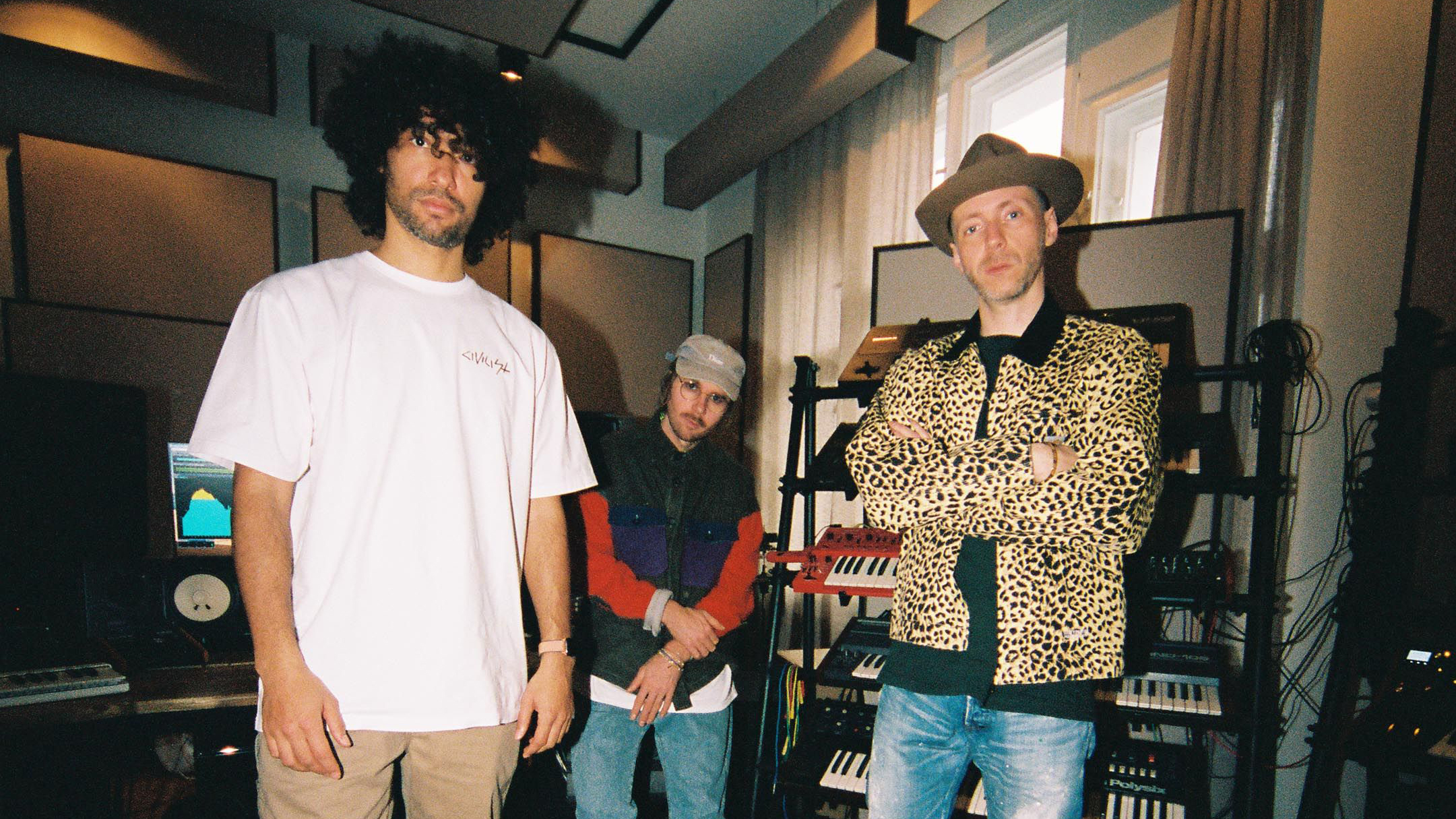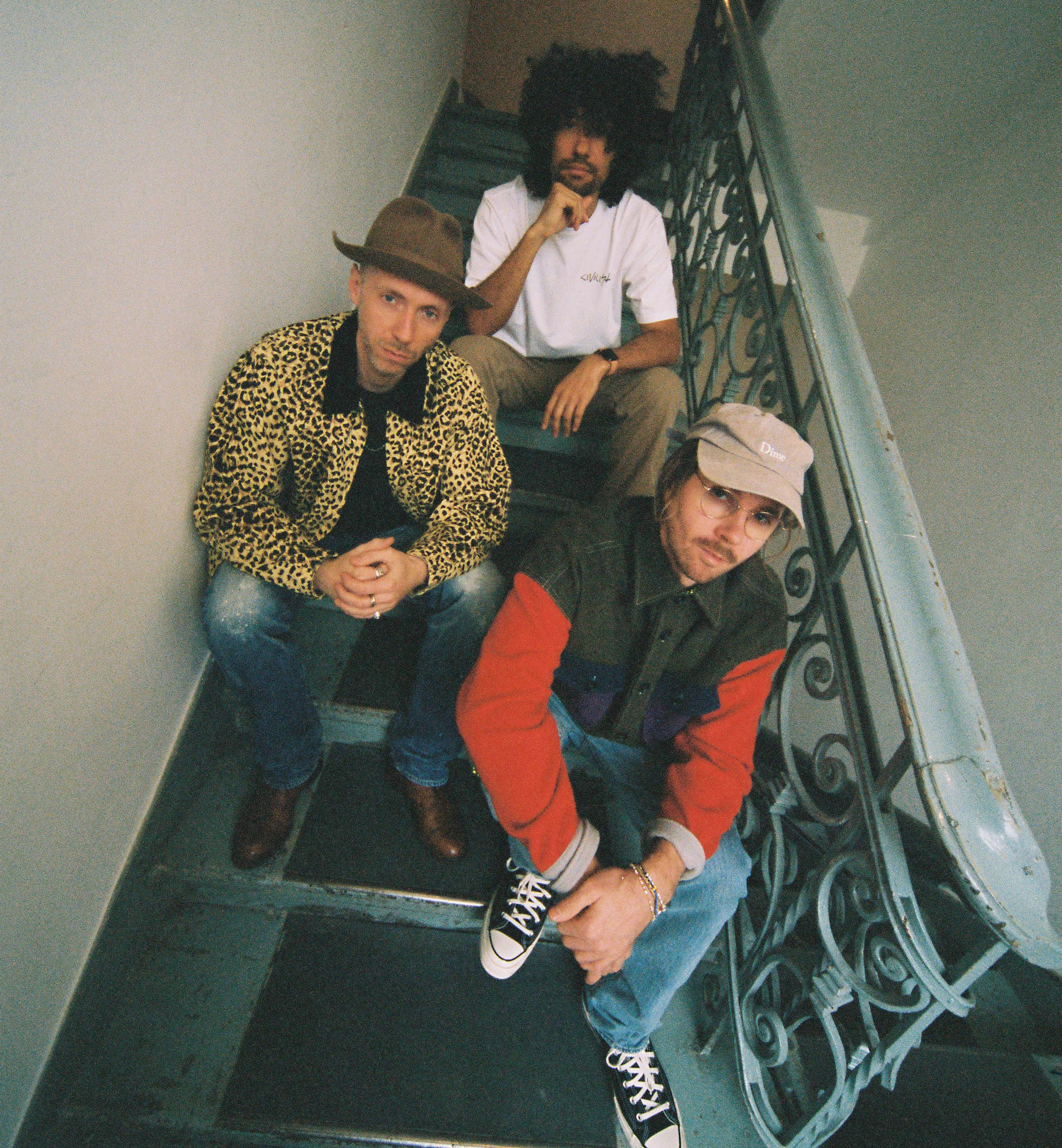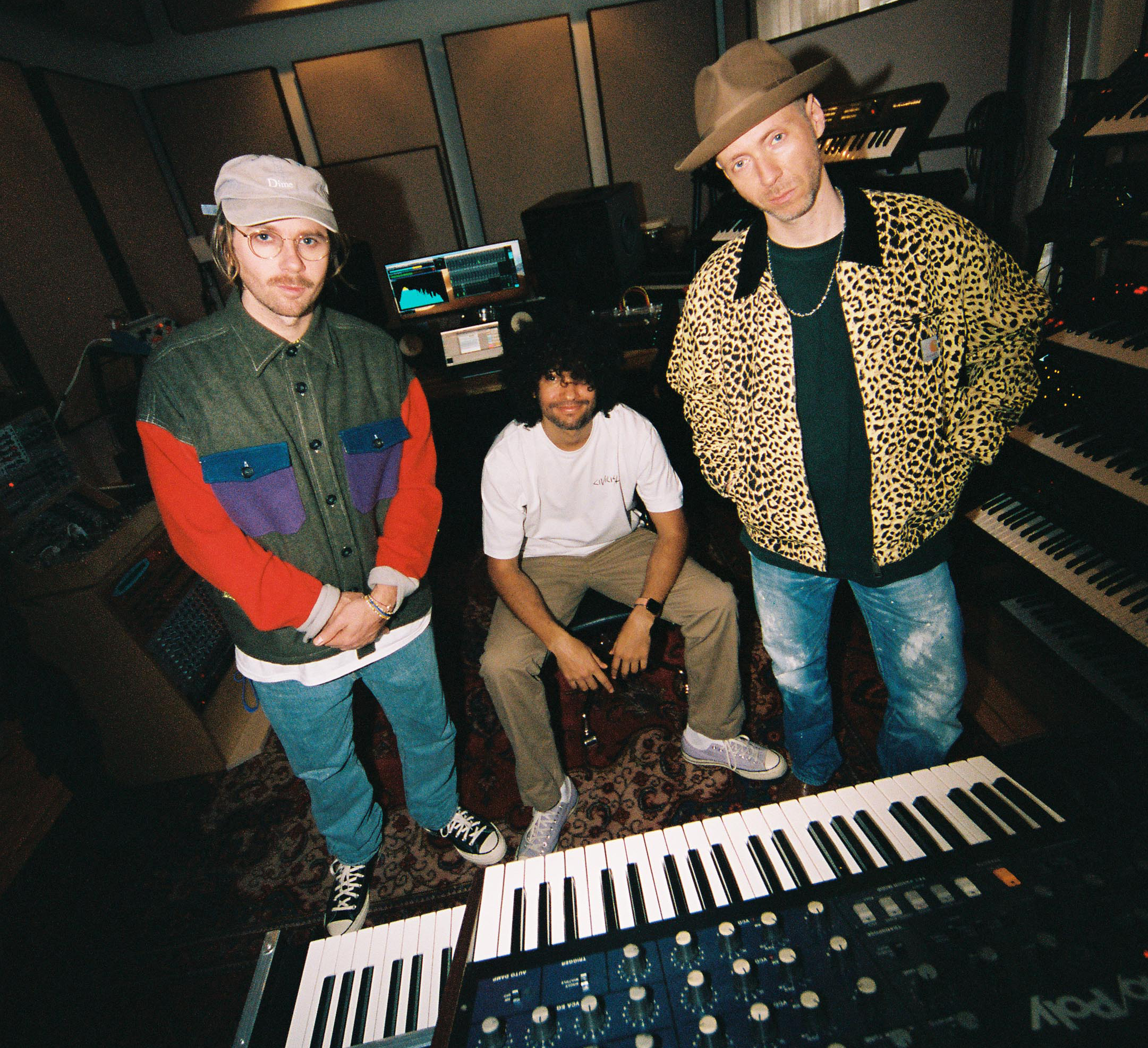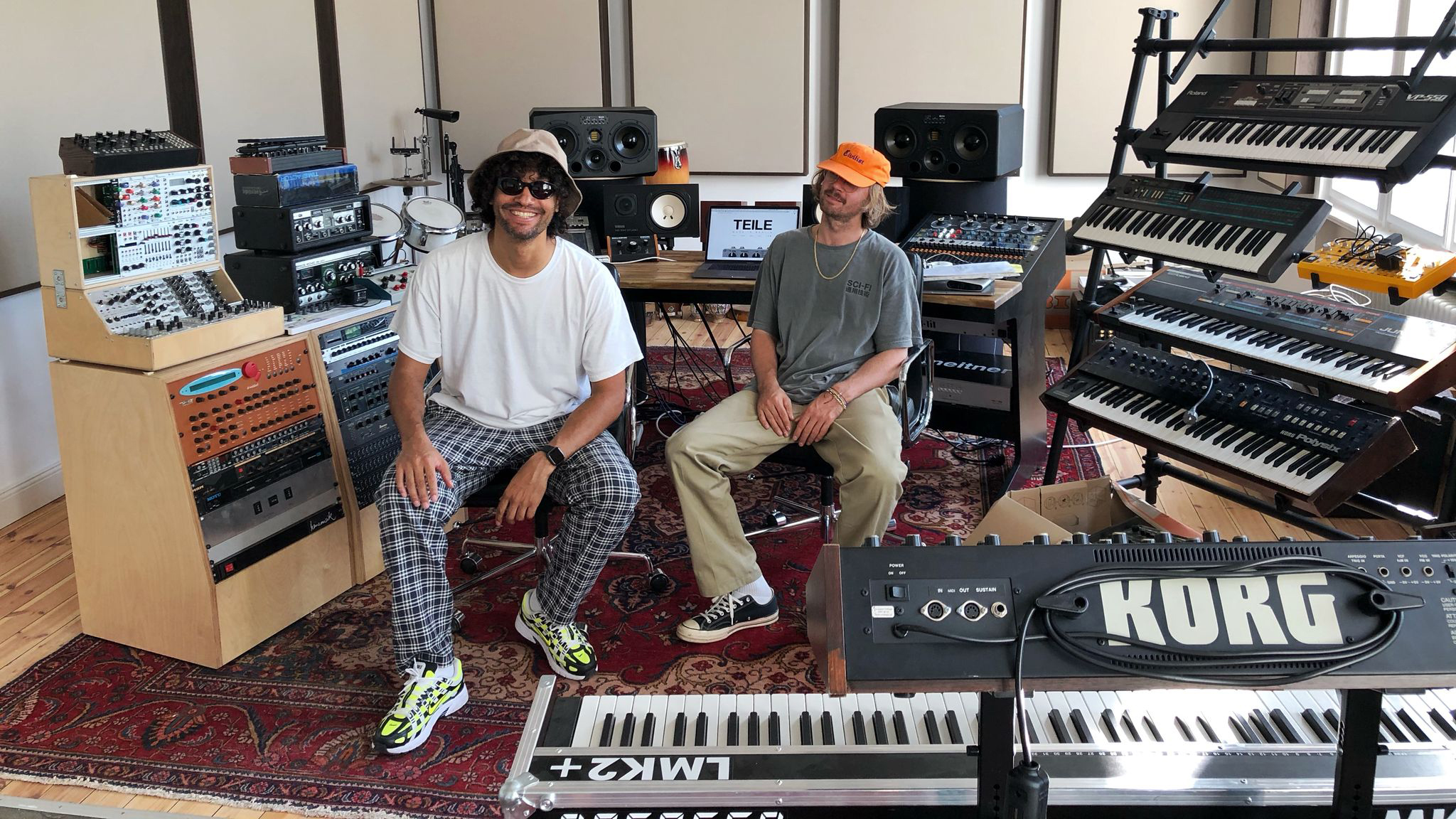Keinemusik: "In the end, everything should sound somehow live and organic. Distortion, noise, detuning - all this helps with that"
Adam Port, &ME and Rampa open up about their latest release, Send Return, and their performance-focused hardware brand

Keinemusik first caught our ear back in 2017 with their ambitious debut album You Are Safe. Since then, the Berlin-based trio have refined their creative process, linking up with a variety of collaborators to produce an impressive sophomore effort that expands their sound while remaining firmly focused on the dancefloor. We spoke with Adam Port, Rampa and &ME of Keinemusik about production tricks, the art of collaboration and their performance-focused hardware brand, TEILE.
Tell us about how you first got into music making.
Adam: “I was DJing RnB and hip-hop back in the day and at some point it wasn’t enough and I wanted express myself better. I got a cracked version of Cakewalk from a friend and then I started to play around with sounds. I had no drum computer or synths so I sampled every kick, hihat, and snare from my vinyls. I still use this technique sometimes.”
Rampa: “I started playing drums super early and my best friend’s older brother was a techno DJ with turntables in the basement, so we’d sneak down and play. Then I bought my first 140 bpm techno records and also got into turntablism and hip-hop. Recording and producing were parallel to DJing… Reason, Fruity Loops and Cubase in the schulhof.”
&ME: “Pretty much everything started with a loopable CD player and a cheap turntable when I was a teenager. I was able to create some loops and tried to scratch or beatmatch some music or vocals over the top. Later, when I finally got some VHS tapes from the Invisibl Skratch Piklz, I went from trying to DJ to trying to create some beats with Magix Music Maker and Samplitude… albeit slowly. It took me years to put anything together I was happy to share with my family and friends.”
The most essential studio equipment for me would be the monitors and the feel and sound of the studio itself
When and how would you say you became successful, or at least able to make a living from music?
Adam: “It was possible to quit my daytime job around 2013. It was not an easy decision and I still remember it quite well. To be responsible for yourself takes courage, especially when it comes down to creative work. It was one of the best decisions of my life.”
Get the MusicRadar Newsletter
Want all the hottest music and gear news, reviews, deals, features and more, direct to your inbox? Sign up here.
Rampa: “I don't remember an exact date or year but there were a lot of ups and downs. I remember how scared I was because I didn’t have any gigs or recording jobs for the next month or two and then something came in, and I was safe for some time.
&ME: “I guess it was around that time when our label Keinemusik started picking up traction and DJ gigs started to flood in. That was the first time I could rest easily knowing the next three months will be ok. Berlin helped a lot because ten years ago the rent and everyday expenses were pretty low.”

What is your overall philosophy or approach when it comes to music (playing, recording, production)?
Adam: “Trying to make music that doesn’t sound outdated in 10 or 20 years. Sometimes it works, sometimes not.”
Rampa: “Just do what I like to do, make what I like to make and to not stress while doing it.”
&ME: “My aim is not to be generic so I try to find a theme or melody that sticks and can build for the duration of the track. It should also transport a positive vibe because ultimately I'll probably want to play it in my sets.”
Tell us a little about your studio set-up and your most essential studio equipment.
Adam: “I work in-the-box only so the other two guys can tell more here.”
&ME: “I’ve gathered some of the classics in our studio over the past years but coming from an in-the-box setup I tend to only use them at the very end. The most essential studio equipment for me would be the monitors and the feel and sound of the studio itself. You have to feel comfy with everything, from the couch to the gear.”
What are your favourite five plugins?
Adam: “Sugar Bytes’ Turnado, Sonalksis’ Creative Filter, the Soundtoys bundle, Waves’ H-Delay, Rob Papen’s Blue II. I would recommend checking out YouTube tutorials to see what they can do.”
Rampa: “I change my favourites all the time as I like to try new things, but I use Soundtoys a lot, FabFilter, and I don’t think there is one tune without Valhalla VintageVerb on my computer!”
&ME: “Number one is definitely the TrackSpacer. I use them to clean up the low end and make room for the kick. You can easily build your own ducker but this is easier and more fun. Next one would be the TAL reverb. It’s free, sounds cheap and adds some nice fast delay to my percussive sounds. Primal Tab for the weirdest delays you can imagine and oeksound Soothe2 for any kind of harshness you want to remove.”
How do you usually start a track?
Adam: “I usually have a melody, a groove or sample that has the recognition value of the track. Then I work at finding the missing pieces that make a track complete.”
Rampa: “There is no system to how I start a tune. I collect whatever comes and hope it flows. When I feel it I’m pretty fast. Like 40 minutes to 2 hours max and the tune is done.”

How do you know when a track is finished or what advice do you have to complete a track?
Adam: “I’m not someone who works on a track for ages. It’s done when it’s done and when it feels right. To hear my new music in the club without looking on a screen helps me to know whether the track is ready.”
Rampa: “I’m kind of the opposite! I never have the feeling it’s done, and after I ‘finish’ I make 20 versions before going back to the first!”
&ME: “It’s always a good sign a track is finished when the eight minutes feel like two and you have nothing more to add.”
Talk us through at least one of your production tricks or processes that you tend to use most often and that perhaps defines your sound over others…
Adam: “As mentioned before I use only the computer to make music, but I like the organic sound and dirt in music so I use found sounds, atmosphere and room in the background of my music. This helps to stop it sounding computer generated.”
Rampa: “I like to detune everything a tiny bit and put Echomelt or something like that on top so it’s slightly off. I like that a lot.”
&ME: “In the end, everything should sound somehow live and organic for me. Distortion, noise, detuning - all this helps with that and is not really a trick but in combination, probably my sound. The groove should also never get boring. Leave it on for 20 minutes while sitting on the couch and if you keep feeling it, it might be right. Unless you hate it the next day.”
If you’ve been involved in collaborations for this project, tell us about how those went?
Adam: “The name of the album [Send Return] describes them pretty well. I made the track at the start of the pandemic so it was necessary to work from a distance. For example, I had a sketch with the baseline for the track with Little Dragon for a while and I looked for the right vocals on it.
"I sent it to them and they played more instruments over it and added these beautiful vocals. Then I got it back to finalise the arrangement. The track with Solomun happened the other way around. He had a sketch that was the DNA of this collaboration.”
What is on your wishlist studio gear wise?
Adam: “I am perfectly happy.”
Rampa: “Andre and I are still buying gear. It comes in waves, we get nerdy and then encourage each other to buy more. I feel like I might get back into modular again soon. I was a bit lazy on that in the past 2 years.”
&ME: “Next step could be a Jupiter-8, a Memorymoog and an Oscar from the Oxford Synthesizer Company. As for the moment, we have a new studio and I’m good”.
What would you like to see developed in terms of studio technology and why?
Adam: “Even easier chord progressions, randomisations, better virtual guitars and basses and a virtual vocalist - easy.”
Tell us more about the effects unit you’ve developed.
Rampa: “The TEIL1 is our flagship product that takes a hands-on approach to delay for DJs and producers. The main delay algorithm simulates a tape delay, allowing you either speed up or slow down the tape via the TIME knob. As you cycle between the time modes from 3200ms – 400ms, the delay time gets halved or doubled with each step.
"Any repeats still in the feedback loop at the time of switching will have their time and pitch doubled or halved, as if you were changing the speed rapidly on a tape delay. Interesting rhythmic patterns can be created with this function. Switching to FAST, FULL or LOOP modes deletes the repeats from the feedback path.

“LOOP mode allows you to create loops up to 12 seconds long and then warp them. Some interesting sounds can be made by changing the speed of the loop with the TIME knob, as well as the grain size with the FEEDBACK knob. The speed change is achieved by an old school time stretching algorithm.
"The MIX/WET switch is something that guitar FX don’t have, and allows you to return only the wet delayed signal. This is especially useful on a DJ mixer, where you don’t want to have the original signal coming back to the FX return.”
High fidelity was always a top priority from the start of this design
“The ANALOG/DIGITAL switch allows you to apply a high cut filter and mild tempo/pitch modulation when ANALOG is selected. MOM stands for momentary. When it’s switched on, the signal only gets into the FX loop while the button is pressed. This function is cool for longer delay times on isolated sounds. For example if you only wanted to delay a snare in a mix.”
“High fidelity was always a top priority from the start of this design. The TEIL1 uses low-noise electronics throughout all analog stages, and only the delayed repeats are processed in a DSP environment, leaving your original signal unconverted. All AD/DA conversions are done with high-performance 24-bit converters.”
How did the idea for this come about?
Rampa: “Ben and I met in a bar one night. He was custom making recording studio equipment, and I was a DJ he'd never heard of. I asked him to modify a few of his guitar pedals to make it easier to DJ with, and then we just decided to start designing our own ones. I would design the functionality and look, and Ben took care of the technical side. All TEILE projects start as tools that we need. If they work under the pressure of touring or the studio, then we release them to the public.”
Do you have any further products planned for release under this brand?
Rampa: “Yes! We are giving the TEIL1 (Keinedelay) a break for a bit, while we focus on our other products. The TEIL3 (B&) should be released really soon. It’s a 3-band, analog isolator EQ, designed to integrate with club mixers and be easy to tour with. After that, the TEIL2 (Revolo) should be the next available product. It’s a super spacious reverb, with tremolo function and a few other features.
“We are also fine-tuning our studio monitors. This is a big project that we have been working on for a while, and will only be made in small batches. The speaker boxes are hand built by our friend Fidel Egenter in Freiburg. They sound great! We also have another fun project with Moon Armada and DJ Tennis which should appear on the internet soon.”
What track by any other artist do you wish you had produced?
Adam: “The Verve - Bittersweet Symphony.”
&ME: “Wham! - Last Christmas.”
Finally, what else have you got planned for the near future?
Adam: “Collecting the remixes of our album tracks and more chill time. Everything depends on the pandemic. When COVID fades away we will start our album tour in the first quarter of 2022 after getting back from Tulum.”
Keinemusik’s Send Return is out now.
Visit TEILE's website to find out more about their products.



I'm MusicRadar's Tech Editor, working across everything from product news and gear-focused features to artist interviews and tech tutorials. I love electronic music and I'm perpetually fascinated by the tools we use to make it. When I'm not behind my laptop keyboard, you'll probably find me behind a MIDI keyboard, carefully crafting the beginnings of another project that I'll ultimately abandon to the creative graveyard that is my overstuffed hard drive.
“How daring to have a long intro before he’s even singing. It’s like psychedelic Mozart”: With The Rose Of Laura Nyro, Elton John and Brandi Carlile are paying tribute to both a 'forgotten' songwriter and the lost art of the long song intro
“The verse tricks you into thinking that it’s in a certain key and has this ‘simplistic’ musical language, but then it flips”: Charli XCX’s Brat collaborator Jon Shave on how they created Sympathy Is A Knife











